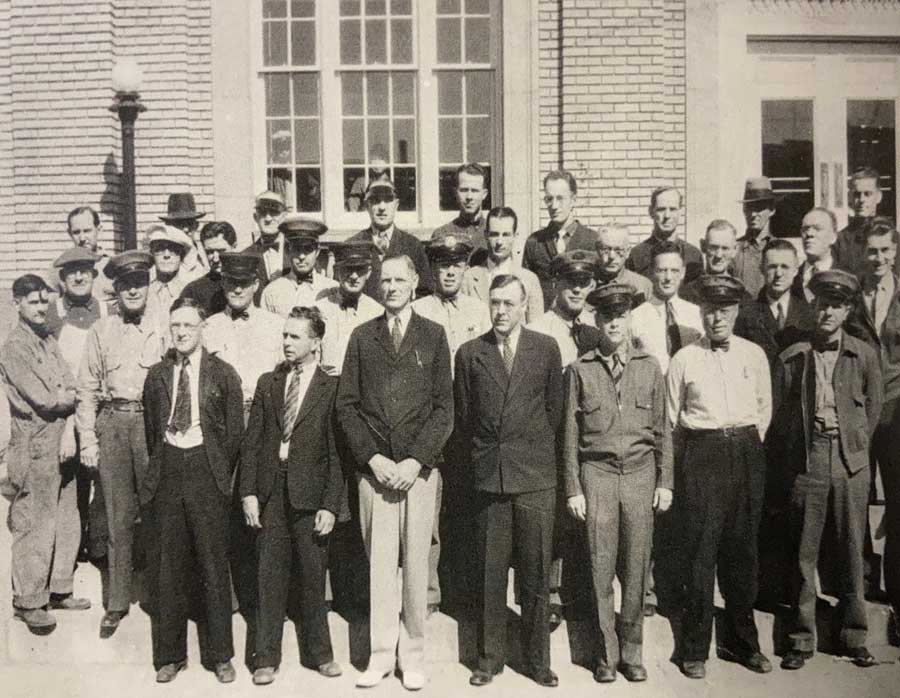Looking back: Women thrown from buggy, chestmobile unit in town and newspaper explores why Teton Dam burst
Published at
IDAHO FALLS — EastIdahoNews.com is looking back at what life was like during the week of June 6 to June 12 in east Idaho history.
1900-1925
ASHTON — Two women were hurt after being thrown off their horse and buggy, according to a June 12, 1913, article in the Ashton Enterprise.
Mrs. Fred Wilkie and Mrs. Olaf Larsen were on their way to the cemetery when “the team became frightened and started to run at a good speed.”
Both women “took hold of the lines” to keep the horses on the road. They had them “almost under control” when a line broke, and the horses turned the buggy over, throwing Wilkie and Larsen out.
The buggy ran over Wilkie’s ankle and cracked a bone just above the ankle. One of her fingers was broken in the accident, and her body was “badly bruised otherwise.” Larsen suffered a broken rib on the right side, “a wrenched back” and internal injuries.
“She was quite serious for a few days, but her condition now is improving,” the paper pointed out.
The Wilkie children, who were also in the buggy, walked away with only bruises and scratches.
1926-1950
SALMON — “Death and booze” were helping “support Idaho schools,” according to the Salmon Recorder Herald’s June 10, 1936, publication.
The local paper said death and alcohol helped pay the bills for Idaho’s annual $12,000,000 educational program.
“Under a law that has been on the statute books 11 years, the Idaho public school endowment fund has been enriched $63,997 through the death of persons who left no wills and no known heirs,” the article stated.
It added, “Under another law, the state liquor control act of 1935, the public school income fund receives upwards of $100,000 annually from liquor store profits.”
The sources of revenue combined with receipts from sales and certain taxes, store licenses and state and country ad valorem levies to “maintain the common schools and institutions of higher learning.” The paper said 120,000 students annually attend the schools.
The week the article was published, $6,880 was transferred to the public school endowment fund under the law that estates of those without known relatives or wills should go to the state after being settled by the courts. After the county’s transfer to the state had been on record for 16 months, the transfer of money to the endowment fund could take place.
1951-1975
PRESTON — A chest X-ray unit was going to be available in Preston and its surrounding areas for a select number of days.
The Preston Citizen announced on June 11, 1953, a “chestmobile unit” would be in town for one week. The “mass chest X-ray program” was part of state and national campaigns to detect the presence of tuberculosis in people.
“The X-ray is free to everyone, and you are urged to take advantage of the opportunity to be sure you are safe from the disease which more than 500,000 people in this country have today,” the Preston Citizen explained. “However, it is said that less than half this number are aware of their infection.”
The paper said the other quarter million are “walking, working, moving freely about — perhaps spreading germs to other people.”
1976-2000
REXBURG — An article in the Idaho State Journal on June 6, 1976, explored why the Teton Dam gave way the previous day.
The team that participated in designing the Teton Dam, a few miles northeast of Rexburg, was making an on-site inspection to determine why the structure failed, Federal Bureau of Reclamation regional planning officer John Mangan of Boise said.
“The plans were developed in Denver, and the designs drawn in Denver. We participated in the work,” said Mangan, who added he knew of no problems in materials or substitutions in materials. “All material was of local origin.”
Mangan was asked to comment on a geologist’s theory that the end of the dam might not have been pinned properly to bedrock. Mangan said he knew of no particular construction problems.
“I don’t think anchoring is the problem,” he added. “I don’t think the story it let go first at the top is accurate, either.”
Lee Rowe, vice president for heavy construction for Klewit and Sons, said he didn’t have “enough background to make any comment on responsibility.”
“The dam was built in accordance with plans and specifications of the Bureau of Reclamation,” Rowe stated.
“We’ll have a lot of meetings with our staff Sunday,” Mangan said. “Most of them were out on the golf course or out of touch today.”


